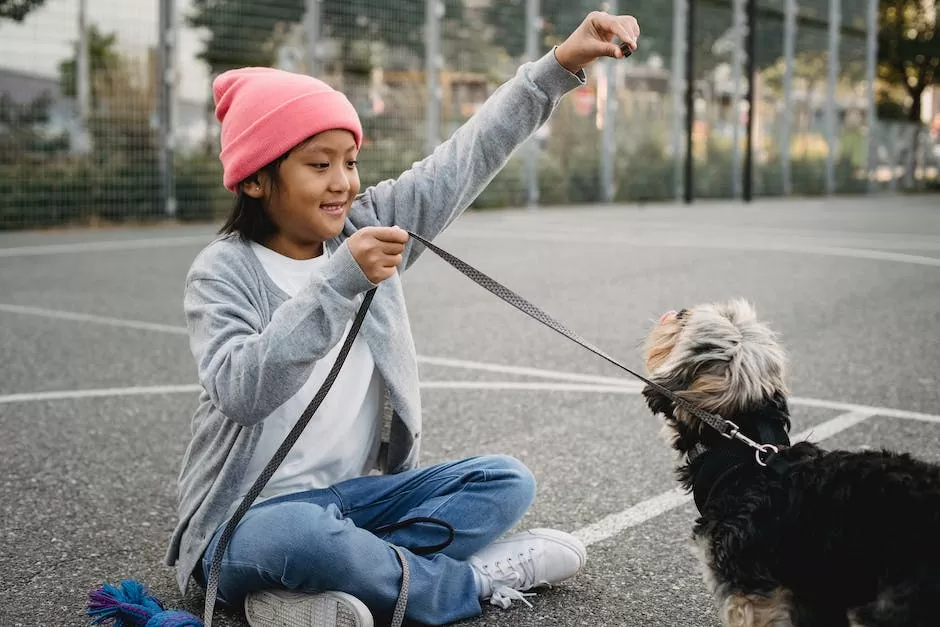How to train dog to behave in public?

Your furry friend is always so well-behaved at home, but when you take them out in public, it feels like all bets are off. If you’re struggling with how to train your dog to behave in public, you’re not alone. Here are a few tips to get you started.
1. Start with basic obedience commands such as sit, stay, come, down, and stand.
2. Socialize your dog from an early age by bringing her around different people and places.
3. Expose your dog to different types of environments, such as parks, busy streets, and quiet neighborhoods.
4. Reward your dog for good behavior with treats, affection, and praise.
5. Be consistent with your commands and expectations, and remain patient while training your dog.
Why does my dog freak out in public?
Adult dogs can also experience social anxiety. It is most common in dogs rescued from puppy mills or abusive and neglectful situations. They may have had little or no human contact or only negative experiences with humans. Stray dogs may be anxious because they have a general distrust of people and busy places.
The quiet method is a great way to train your dog not to bark excessively in the presence of strangers. By gently holding their muzzle and saying “quiet”, you can effectively communicate to your dog that you do not want them to bark. If they remain quiet, be sure to reward them with a treat to reinforce this desired behavior.
How do you calm down a hyper dog in public
If you want to keep your dog calm in public, there are a few things you can do. First, teach and practice basic obedience. This will help your dog to understand what you expect from them and will help them to focus. Second, choose appropriate equipment. A harness or collar that is comfortable and fits well will help to keep your dog calm. Third, burn off excess energy. A good walk or run before going into a public setting will help to calm your dog down. Fourth, bring better temptations. If you know your dog is likely to get excited in a public setting, bring along some of their favorite toys or treats to help keep them calm. Finally, be attentive. Pay attention to your dog and be ready to intervene if they start to get too excited. By following these steps, you can help to keep your dog calm and relaxed in any public setting.
It is important to socialize your dog when they are young in order to prevent aggression towards strangers. You can do this by exposing your dog to lots of different situations and people in a safe, controlled environment. Teach your dog that strangers are not a threat to you or him.
How do I get my dog to behave around strangers?
Here are a few tips to help you train your hyper puppy to greet strangers:
1. Stay away from the dog park. For starters, you should probably avoid the dog park until your puppy is fully trained.
2. Practice at home. Draw his attention elsewhere, such as with a toy or treat, and then walk away.
3. Practice puppy pushups. This is a great way to tire out your pup and help him focus.
4. Pull in a friend. Ask a friend or family member to help you out with training.
5. Speak up on walks. If your puppy starts to get too excited when greeting people, make sure to speak up and give him a firm command.
6. Choose a special collar. A collar with a bell or other noise-maker can help get your puppy’s attention when you need it.
It’s important to be cautious when introducing your dog to a new person. Offer treats from the stranger/new person to make it clear that you’re looking for positive behavior from your dog. As your dog gets closer to the new person, be sure to have the stranger pat your dog carefully. Patience is key!
How can I make my dog more social?
Getting social can be a little ruff on your pooch, so make sure they feel encouraged. The best way to socialize your dog is to expose them to different environments and situations. This can be done by taking them on walks, to the dog park, or to doggy daycare. Make sure to introduce your dog to other dogs, people, and puppies gradually so they feel comfortable and confident.
To train your dog the “quiet” command, start by teaching them the cue word “speak.” Once they learn to respond to this cue, you can then move on to teaching the “quiet” command. Use a calm, firm voice to tell your dog to be “quiet” and then provide a treat or piece of affection directly after they comply. With patience and consistent practice, your dog will eventually learn to respond to “quiet” on cue.
Why does my dog keep barking on walks
There are a few reasons why your dog may bark while on walks. It could be due to fear, defence, excitement, frustration, the need for interaction, or play. The type of barking may take some time to understand, however you’ll know your dog best and you’ll often be able to understand what their barking is trigged by. If your dog is barking due to fear, you’ll want to take measures to help them feel more comfortable and safe on walks. If they’re barking for defence, you may need to work on their socialisation and help them feel more comfortable around other people and animals. And if they’re barking out of excitement or play, you’ll just need to be aware of their triggers and be ready to redirect their behaviour when necessary.
It’s normal for puppies to be full of energy and excitement, but as they age they start to become more calm and relaxed. This typically happens around 12 months for most breeds, but larger breeds may take longer to reach maturity and may not start calming down until 18 months to 2 years.
How do you calm a dog in social situations?
Anxiety in dogs can be caused by many different things, but one of the best ways to help them feel better is to provide a low-stress environment. Some steps that can help with this include social contact with humans (such as petting and talking gently to them), soft, soothing music, and physical exercise. By taking these steps, you can help your dog feel calm and comfortable, and avoid some of the negative behaviours that can occur when they’re feeling anxious.
There are plenty of things you can do to socialize your puppy! You can find a socialization program, have a puppy meet-up, play fetch on an incline, get some brain stimulating toys, play some puppy mind games, take daily trips to the dog park, go to the beach, or have some all day play. Whichever activity you choose, your pup is sure to have a blast!
Can aggression be trained out of a dog
Training an aggressive dog is possible, but it will take time and patience. You will need to work with a professional dog trainer who can help you teach your dog to control their aggression. With the proper training, your dog can learn to be gentle and loving.
A lunging and mouthing are typical ways for dogs to play with each other. This play behavior is especially common in puppyhood, but can continue into adulthood. Certain breeds are more likely to jump up toward the face during play, rather than focusing on the chest, paws or side as other breeds may do.
How do you break a dominant dog?
There are a number of ways of dealing with dominant dog behavior. Firstly, it is important to stay calm in order to show the dog that you are in control. Secondly, be assertive when setting rules for people to follow. Do not try to force the dog to interact with people, as this will only Heighten theirDominant behavior. Instead, give the dog a job to do, such as guarding the house or yard. This will give them a sense of purpose and help to curb bad behavior. Finally, identify bad behaviors and Inconsistent rules. This will help you to set an achievable goal for the training.
If your dog gets overly excited when a guest is in your home, give him a time out. Put him in his crate in a back room away from the noise and confusion. Give him something to chew on, or at least a few treats, when you put him in his crate. This time out is not punishment; he’s done nothing wrong.
How do I train my dog not to go crazy when he sees people and dogs
When you’re out walking with your dog, remember to bring along some extra treats that they’ll only get when they see other dogs. This will help them associate seeing other dogs with something positive (getting a treat). As soon as you see the other dog, start lavishly praising your dog and giving them a treat.
territorial instincts are natural and normal for dogs and other animals. However, when these instincts are taken to the extreme, it can cause aggressive behavior towards people or other animals. This behavior is often reinforced because the dog perceives that his aggression is what drives people or other animals away.
How do I teach my dog to be friendly with everyone
You want to make sure that your dog is comfortable when meeting new people. You can confine your dog to a separate room when new people come over, and let them make the first move. Ask the new person to offer treats to your dog, and do not reward your dog if they continue to show fear or shyness. Be patient and start in a calm, neutral environment. Go slowly at first and make sure that your dog is comfortable before proceeding.
Make sure to give your dog plenty of time to get used to people; avoid making direct eye contact at first, and approach dogs at their level. You can also try throwing out treats, which will help your dog feel more comfortable while decreasing the distance between you and the other person. Lastly, pet your dog under their chin or on their chest instead of on top of their head.
Warp Up
There is no one-size-fits-all answer to this question, as the best way to train a dog to behave in public will vary depending on the dog’s personality and the specific situation. However, some general tips on how to train a dog to behave in public include socializing the dog from a young age, teaching basic obedience commands, and using positive reinforcement techniques.
If you want your dog to behave well in public, you need to put in some training. Dogs are social creatures and love being around people, so with the right approach, they can quickly learn how to interact properly with others. Just like with people, every dog is different, so you’ll need to tailor your training to your pup’s specific personality. Be patient, consistent, and positive, and before long, you’ll have a well-behaved dog who is a joy to take out in public.